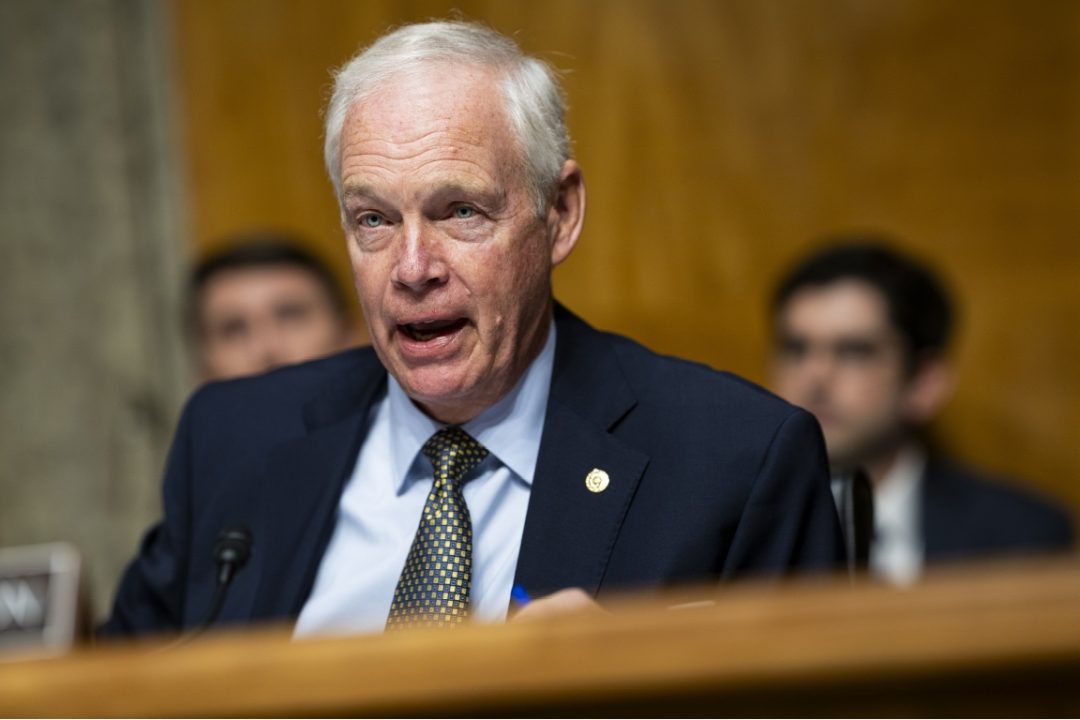
“There’s a long list of things the federal government has just outright lied to us about. We have no idea everything they are covering up.” Senator Ron Johnson (R-Wis.) said this Monday during an appearance on political commentator Benny Johnson’s YouTube show.
That list of coverups, as far as the senator is concerned, include the assassinations of the Kennedy brothers and Martin Luther King, Jr., the Gulf of Tonkin ruse, January 6, and, of course, basically every official narrative tied to Covid-19.
And now, the contrarian senator — he has served as a key leader in the quest for truth on all things Covid — is adding another major event to his list of government coverups.
Senator Johnson recently told Benny Johnson:
What actually happened on 9/11? What do we know? What is being covered up? My guess is there’s an awful lot being covered up in terms of what the American government knows about 9/11.
Weldon Speaks
Senator Johnson’s newfound interest in 9/11 exposure began with the public reemergence of a former high-ranking congressman. Former Pennsylvania Representative Curt Weldon appeared on a host of alternative media shows in mid-April, including Tucker Carlson’s. He brought with him explosive allegations that the deadliest attack on U.S. soil was a coverup. He alleges that U.S. intelligence knew a year in advance about terrorists’ plans to commit 9/11, the CIA knew Osama bin Laden wasn’t in Afghanistan while American troops were there on a mission to find him, and that the official reasons for the collapse of the three World Trade Center buildings are false.
Weldon represented the seventh district of Pennsylvania for two decades until 2006. He served as the vice chairman of the House Armed Services Committee and the House Homeland Security Committee. His has reignited hope among those who already believed 9/11 was a coverup, and he has opened the eyes of many who didn’t previously consider 9/11 a coverup. Senator Johnson seems to be one of those in the latter category.
New Investigation
Senator Johnson’s interest in the issue could prove pivotal. Not only is he a sitting senator, but he’s on Senate’s Permanent Subcommittee on Investigations. And he suggested to Benny Johnson that he’s already thinking about reopening the 9/11 Pandora’s Box. He said, “There are a host of questions that I will be asking, quite honestly, now that my eyes have been opened up. I’ve talked to former Congressman Curt Weldon now. I will work with him … I think so [we may actually see hearings about this].”
Building 7
A major focus of his new mission seems to hinge on the 47-story World Trade Center Building 7, the least talked about, but perhaps the most puzzling, element of that tragic day. Building 7 collapsed shortly after 5:00 p.m. on September 11 — even though an airplane never hit it. Officially, it fell because falling debris from the nearby North Tower (WTC 1) ignited fires in Building 7. It burned for seven hours before coming down. But even the National Institute of Standards and Technology (NIST), which determined the official narrative regarding the collapse of all three buildings, admitted in its 2008 final report that its downfall was unprecedented. “This was the first known instance of the total collapse of a building primarily due to fires,” the report says.
An electrical substation and a power plant were beneath Building 7. The building also happened to have large amounts of diesel oil storage underneath. But, according to NIST, “fuel fires did not play a role in the collapse of WTC 7.” Moreover:
The worst-case scenario associated with fires being fed by the ruptured lines (a) could not have been sustained long enough, or could not have generated sufficient heat, to raise the temperature of the critical interior column to the point of significant loss of strength or stiffness, or (b) would not have produced large amounts of visible smoke that would have emanated from the exhaust louvers. No such smoke was observed.
The collapse of the North Tower ignited fires on at least 10 floors of Building 7, mainly between floors seven to 17. The fires went through the available fuel without any resistance because the collapse of the two towers damaged the sprinkler systems. Had that not happened, the outcome would’ve been different. NIST concluded, “Had a water supply for the automatic sprinkler system been available and had the sprinkler system operated as designed, it is likely that fires in [Building 7] would have been controlled and the collapse prevented.”
But the moment of truth, according to NIST, is when a column in the northeast region of the building gave in. The column failed in nine stories after fire damage caused a “cascade of local floor failures.” NIST then explains the domino effect that followed:
This column had become unsupported over nine stories after initial local fire-induced damage led to a cascade of local floor failures. The buckling of this column led to a vertical progression of floor failures up to the roof, and led to the buckling of adjacent interior columns to the south of the critical column. An east-to-west horizontal progression of interior columns buckling followed, due to loss of lateral support to adjacent columns, forces exerted by falling debris, and load redistribution from other buckled columns. The exterior columns then buckled as the failed building core moved downward, redistributing its loads to the exterior columns. Global collapse occurred as the entire building core moved downward as a single unit. This was a fire-induced progressive collapse, also known as a disproportionate collapse, which is defined as the spread of local damage, from an initiating event, from element to element, eventually resulting in the collapse of an entire structure.
Not Convinced
But some remained unconvinced of NIST’s explanation, including forensic engineer Leroy Hulsey, a professor at the University of Alaska. In 2015, Hulsey and a crew of Ph.D. students undertook a four-year, $300,000 study to determine how Building 7 fell. They reconstructed it according to the original plans using computer modeling. In 2019, Hulsey released the conclusions of the study, titled “A Structural Reevaluation of the Collapse of World Trade Center 7.”
Hulsey said NIST’s conclusion that fires brought down the building was wrong and impossible. “Did building 7 collapse from fires? And the answer is no.… The girder bearings at column 79 moved less than two inches. It would not have been a problem,” Hulsey said. His report says the only way the building could’ve collapsed the way it did was for all the support beams to fail at the same time, hinting at a controlled demolition. According to the study:
Fires could not have caused weakening or displacement of structural members capable of initiating any of the hypothetical local failures alleged to have triggered the total collapse of the building, nor could any local failures, even if they had occurred, have triggered a sequence of failures that would have resulted in the observed total collapse.… The secondary conclusion of our study is that the collapse of WTC 7 was a global failure involving the near-simultaneous failure of every column in the building. This conclusion is based primarily upon the finding that the simultaneous failure of all core columns over 8 stories followed 1.3 seconds later by the simultaneous failure of all exterior columns over 8 stories produces almost exactly the behavior observed in videos of the collapse, whereas no other sequence of failures that we simulated produced the observed behavior. We cannot completely rule out the possibility that an alternative scenario may have caused the observed collapse; however, the near-simultaneous failure of every column is the only scenario we identified that was capable of producing the observed behavior.
Some have speculated that someone might have wanted to bring down Building 7 because of the secret CIA station inside it. The station posed as another federal agency that spied on and recruited foreign diplomats of the United Nations “while debriefing selected American business executives and others willing to talk to the C.I.A. after returning from overseas,” according to The New York Times. The agents working there posed as diplomats and business executives. After the attack, the CIA sent a special team to gather secret documents and intelligence reports.
The silver lining of Building 7’s collapse is that no people died. By the time it came down, everyone in the building already evacuated.
Related articles:
Former Congressman Curt Weldon Resurfaces With Explosive Claims About 9/11 “Coverup”





